There are numerous sites to visit in the city that has been voted the best European destination more than once. Discovering the Bridges of Porto on a cruise through Douro, the river that bathes the “Invicta” city, is an activity that delights those who participate in it. There are several options, and you can either take the route from Ribeira, in Porto, or from the Vila Nova de Gaia Pier. Embark on a Douro Bridges Cruise, get to know more about each one and let yourself be dazzled, whether with your family, on a romantic date or with a group of friends. Even if your stay is short, do not set the idea aside, as the tour takes less than an hour and, in addition to enjoying the bridges that are a landmark of architecture in Porto, you will have a breath-taking perspective of the city.
Travel with All About Portugal in this pleasant experience and we guarantee that you will not regret going aboard a Rabelo, a typical boat on the Douro River, on which trips are normally made. Before or after the tour, set out to discover a city full of places that warrant a visit and enjoy a wide range of viewpoints that will give you other, equally interesting, perspectives of the six bridges that connect the cities of Porto and Gaia.
Dom Luís I Bridge

Considered one of the most beautiful bridges in Europe, it is 395 metres long and eight metres wide, having one of the largest wrought iron arches in the world. It is, unsurprisingly, considered one of the most iconic Bridges in Porto and one of its crown jewels. It was designed by Teófilo Seyrig, a disciple of Eiffel, the author of the project for the famous Parisian tower, and it was inaugurated in 1886, consisting of two overlapping iron boards. The upper deck is occupied by one of the underground railway lines, connecting the Cathedral area of the “Invicta” to the Morro Garden, in the municipality of Vila Nova de Gaia. You can also take the route on foot and take the opportunity to take superb photographs. Another beautiful way to see it is through the Douro Bridges Cruise. The lower deck is smaller and serves as a road and pedestrian connection between the two cities, giving access to the Gaia Pier and the riverside area.
Arrábida Bridge
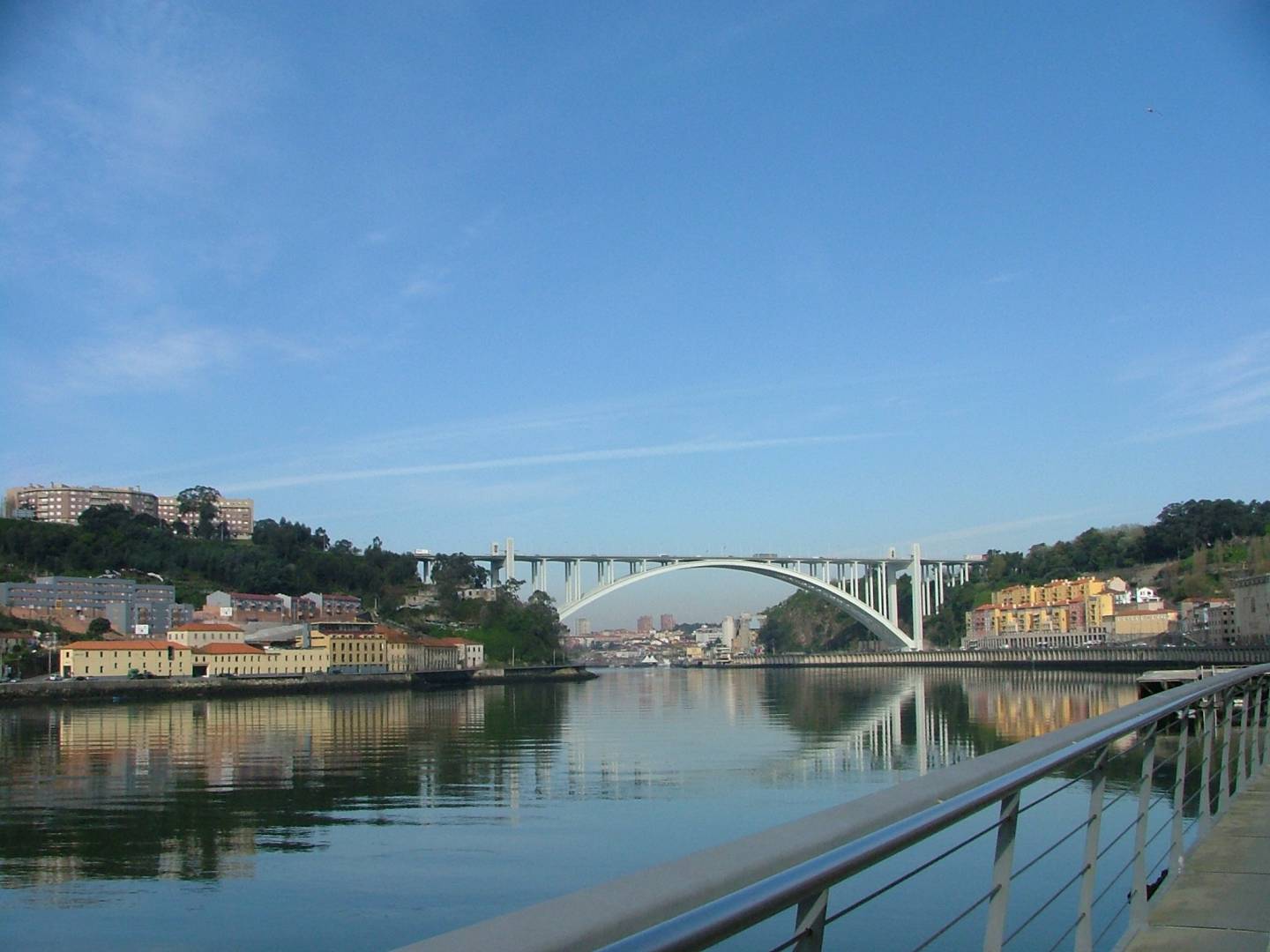
A National Monument since 2013, this bridge stands out for its grandeur and dimension, 70 metres above the average water level. It has a span of 270 metres and once held the world record for bridges with reinforced concrete arches, in a project conceived by Edgar Cardoso. Inaugurated in 1963, it is an outstanding architectural work in Porto and is crossed daily by thousands of vehicles, establishing a connection between the Campo Alegre area, on the “Invicta” side, and Arrábida, on the Gaia side. It is the closest to the Atlantic Ocean and was the first large bridge over the Douro to be designed and built entirely by Portuguese engineering.
Maria Pia Bridge
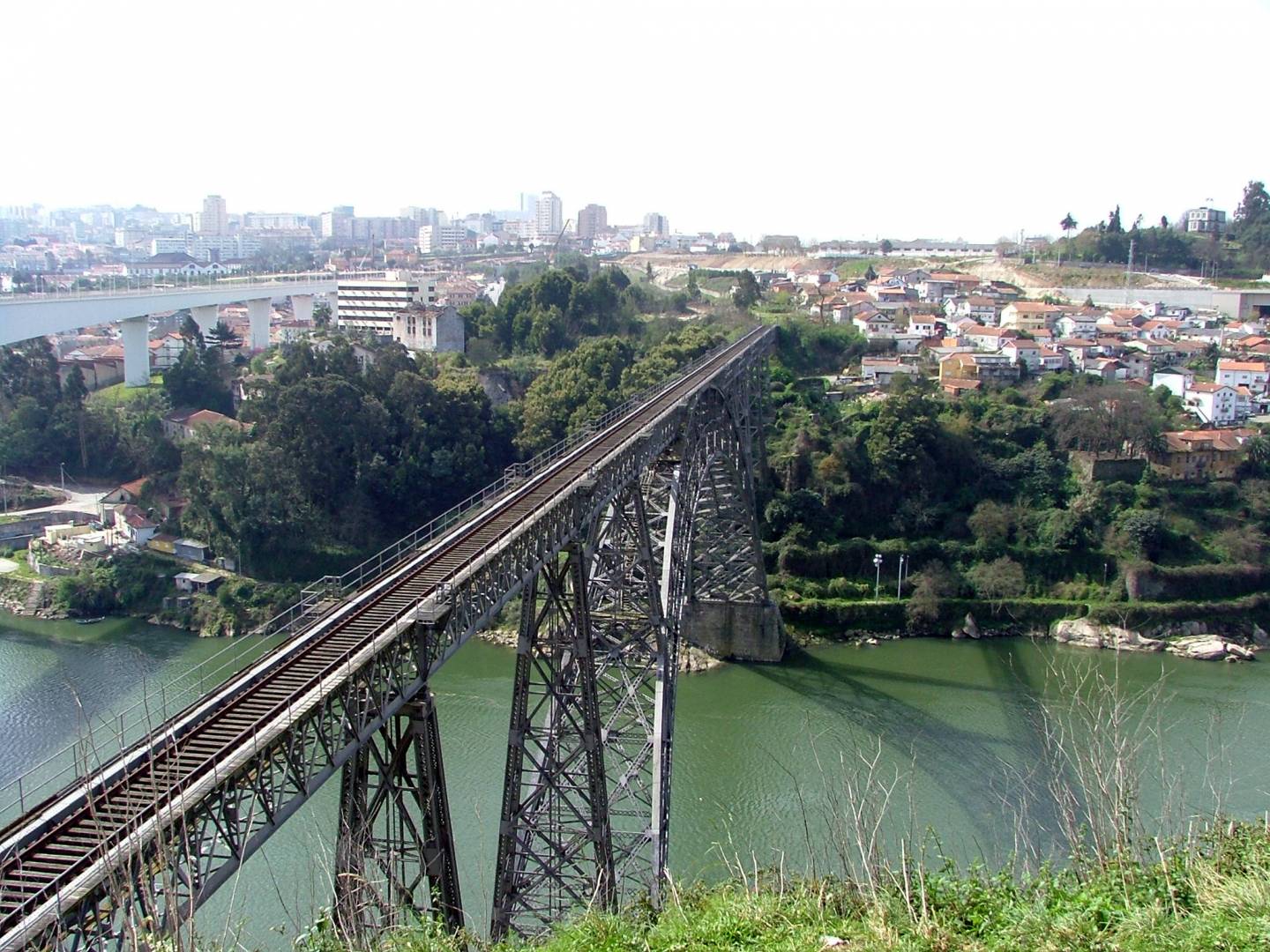
Also classified as a National Monument, and inaugurated in 1877, it was the first major work by Gustavo Eiffel and the bridge that enabled the railway's arrival to the city of Porto, an achievement of great importance for the region's economy. At the time it was built, this iron bridge was an engineering work that surprised the world. Even today, its 160-metre-long arch, located 61 metres above the river's average level, continues to impress. The opening ceremony was presided over by the royal couple Luís I and Maria Pia, who gave it its name. It was used for 114 years and deactivated in 1991, as it was no longer able to meet the demands of the evolution of rail transport. It is the oldest bridge that can be seen on the Douro Cruise route.
São João Bridge
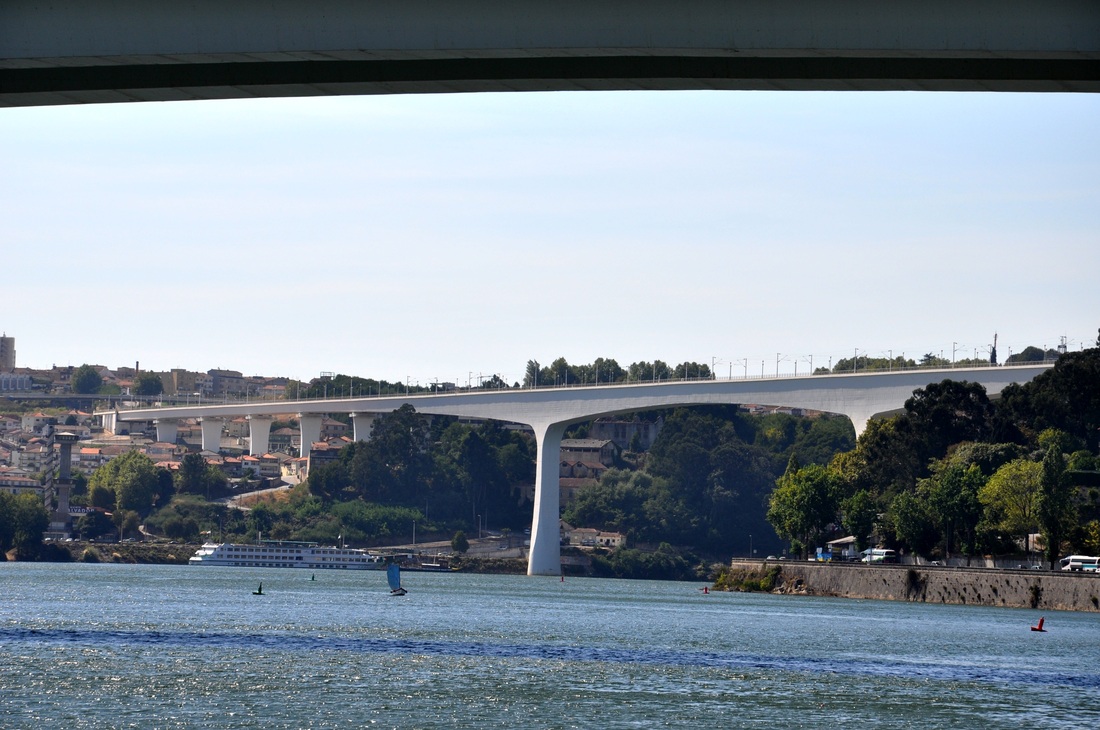
It is one of the most modern bridges in Porto, and it replaced the neighbouring Maria Pia bridge as a railway link between the “Invicta” city and destinations to the south. Built in reinforced and pre-stressed concrete, it is another outstanding work of Architecture in Porto, by Edgar Cardoso, with a clear 250-metre central span, which set a new world record for rigid-frame bridges. The three spans are supported by two imposing pillars, built on both sides, while the total length of this railway bridge is 969 metres. It was inaugurated in 1991, precisely on St. John's Day (São João), an immensely popular and cherished saint in the area.
Freixo Bridge
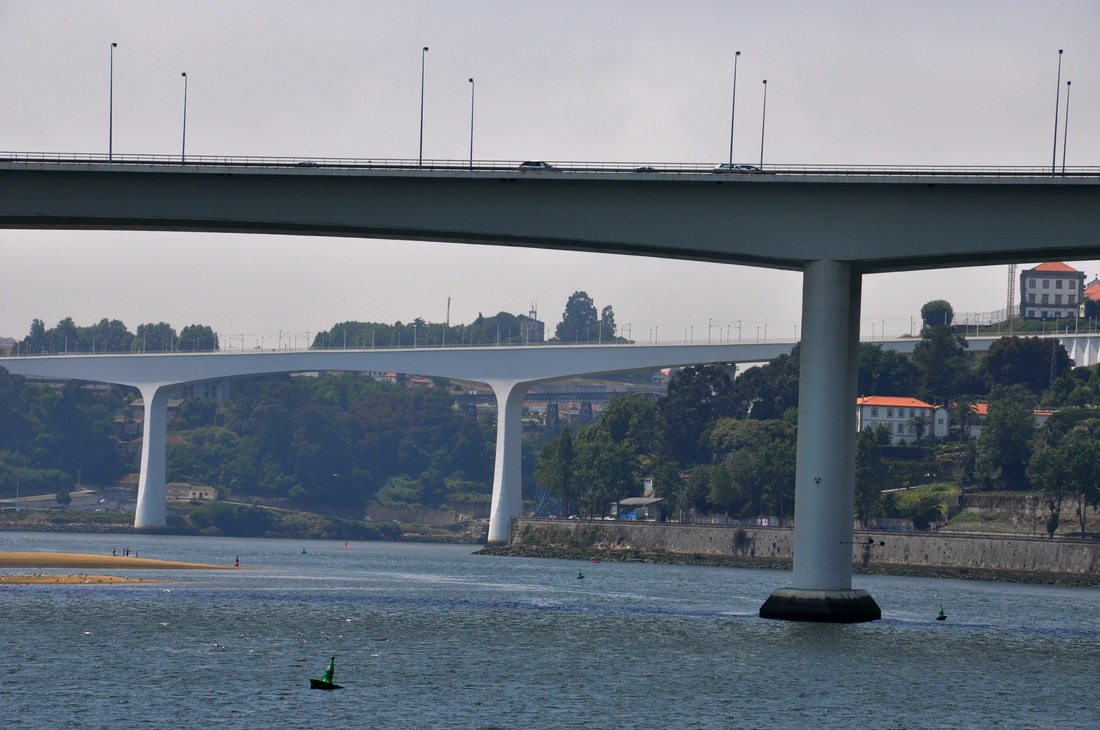
Of the bridges that can be seen on a Douro Cruise, it is the one located further upstream, at one of the ends of the city. It was built with the aim of alleviating the road traffic that accumulated on the Luís I and Arrábida bridges and was inaugurated in 1995 in a project authored by António Reis and Daniel de Sousa. It is crossed daily by thousands of vehicles, establishing a connection between the areas of the Dragão Stadium, in Porto, and Oliveira do Douro, on the Gaia side. Its construction allowed the completion of the internal road network of the city and facilitated passage towards the North. Built in reinforced and pre-stressed concrete, it is a bridge with two decks, parallel to each other and apart by 10 centimetres, along a length of 750 metres. It has four lanes in both directions and a main span of 150 meters.
Infante Bridge
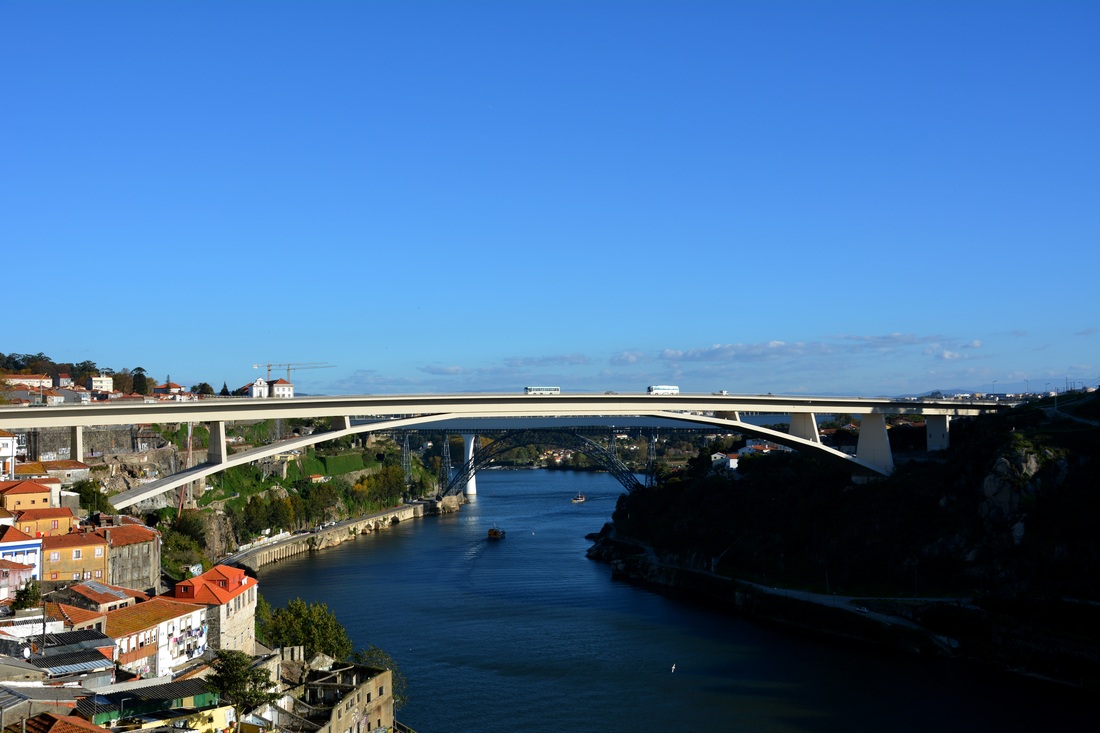
It is the most recent of the Porto Bridges and pays homage to Henrique of Portugal (also known as Prince Henry the Navigator), having been inaugurated in 2003. The project, by Adão da Fonseca and Francisco Millanes Mato, has a practically horizontal 280-metre concrete arch span and is considered an emblematic structure, reaching 72 metres in height. It is one of the largest single deck arch bridges in the world and considered one of the most elegant in this typology by some experts. It unites the Porto area of Fontainhas with the beautiful mountainous area of Serra do Pilar, in Vila Nova de Gaia, and was built with the objective of serving as a replacement road for the upper deck of the Luís I bridge, which is now reserved for the passage of the underground railway lines. It is 371 metres long and 20 metres wide, with two lanes in each direction.
Recommended
